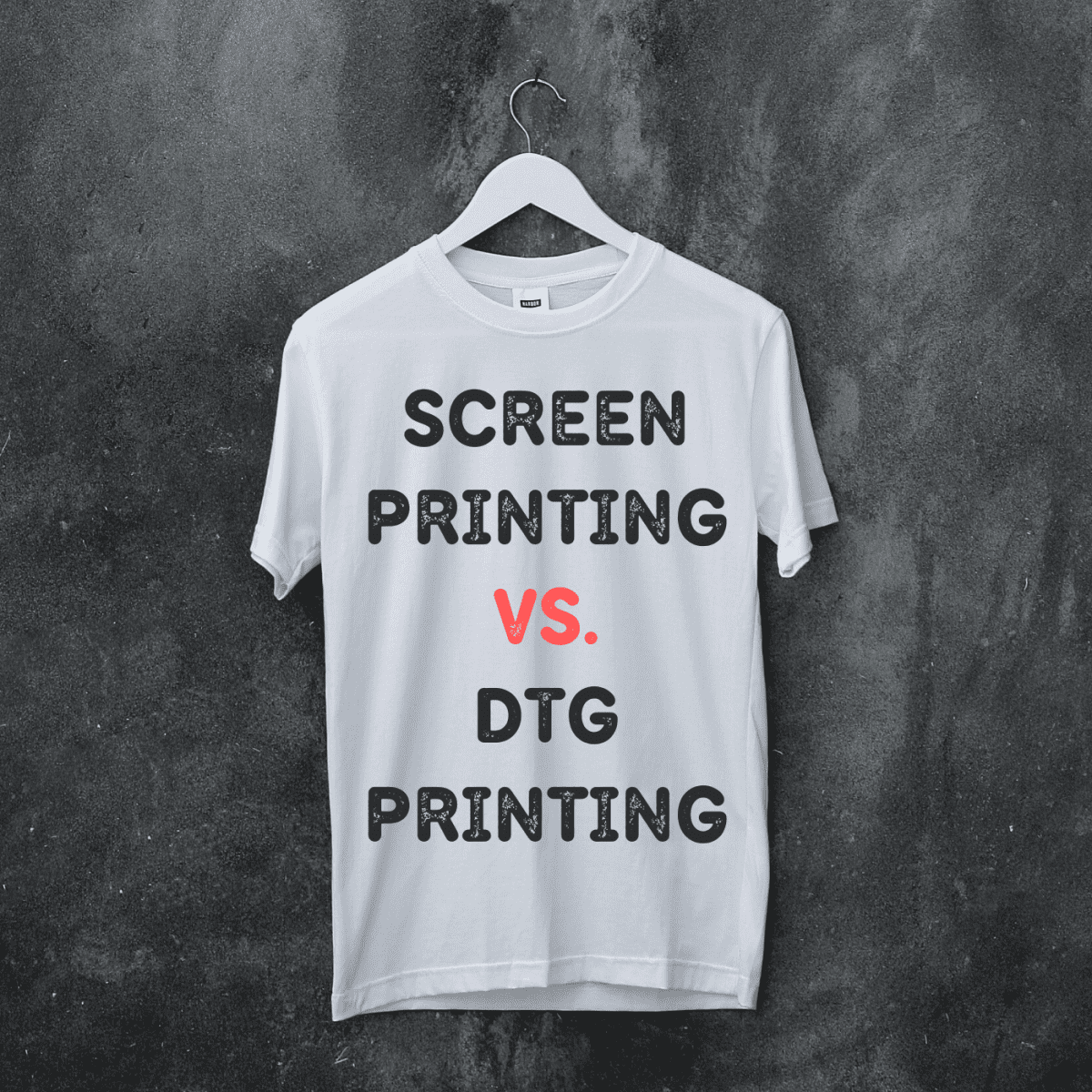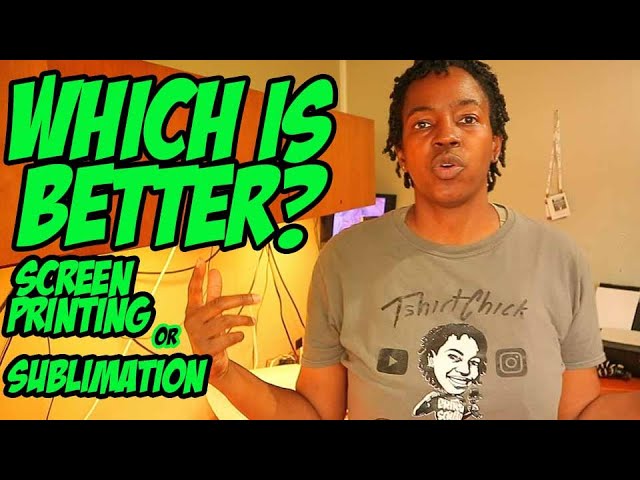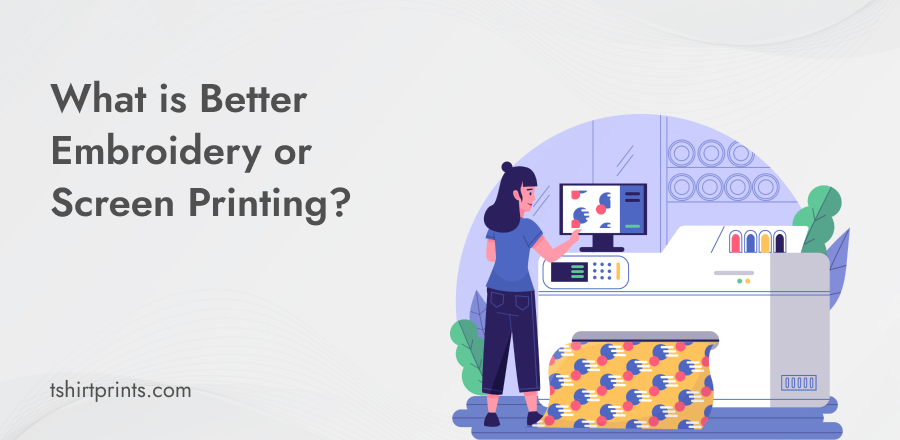The Ultimate Guide To Tx Tees
The Ultimate Guide To Tx Tees
Blog Article
Tx Tees Fundamentals Explained
Table of ContentsFascination About Tx TeesTx Tees for BeginnersNot known Details About Tx Tees 4 Easy Facts About Tx Tees ExplainedExamine This Report about Tx TeesSome Known Incorrect Statements About Tx Tees The 9-Second Trick For Tx Tees
Include up various other costs, like the number of utilities it takes to run the store and the expense of ink and emulsion per design. Take the print listed below.The solution ought to only be a couple of cents because you 'd only require to layer one screen for this job. How much should you charge per tee shirt to make an earnings? Typically, printers try to make up to 45% earnings on a print task. Below's a table to help you figure out that: complete price per item percent of desired revenue as a decimal (instance:.25 or.45) earnings made per thing per work Now let's speak about the productivity of DTF.

With DTF, you can print a handful of shirts, or simply one. Both display printing and DTF have their niches in the globe.
The Of Tx Tees
The most effective means to know? Ask about and see what printing shop like yours are doing. custom monograming. Try both out and see which you like much better
When you're picking what kind of printing method to utilize for publishing your art work layouts on your garments, it is essential that you understand the distinctions in between these 2 strategies so you can make best use of outcomes while minimizing expenses. Screen printing is one of the most frequently made use of strategy for printing styles on fabrics.
DTG printing is additionally known as spot or direct to garment printing because it prints only what is needed as opposed to making a screen as screen printers do. https://russellcostello796.wixsite.com/txtees02. Display printing works by display filler squeegee display printing ink screen mesh display, then moving the picture to garment using warmth and/or pressure
The DTG printer uses unique dye-sublimation inks that are applied right into a pre-designed image by an electronic printing system. The inks enter into the material, allowing for vivid colors and remarkable information. It's also called spot or direct to garment printing since it prints just what is needed rather than making a screen as display printers do.
The Only Guide for Tx Tees
It's much quicker - you can publish a fullcolor picture in minutes, as opposed to hours for screen printing. Second, there's no established up time or prices entailed - you can print any type of layout you like, without having to produce a display initially. Third, there's no waste - due to the fact that display printers screen print one design at a time, they have to evaluate each shade individually.
The paper is really expensive and can only be used when. Once it's published on, it needs to be disposed of. - The preliminary acquisition cost is less than the in advance financial investment of DTG printers- You can publish multi-color styles one screen at once rather of having to publish each shade independently like DTG printing.

Some Ideas on Tx Tees You Need To Know
Instead of making use of display mesh as screen printers do, color sublimation printers make use of laser technology to transfer your photos onto garments or paper. A heat process transfers the color from its solid-state straight right into the gas phase which consequently integrates it onto fabric substrates when they are quickly warmed to heats under high pressure.
Sublimation printing is eco-friendly. It uses less water than screenprinting, and due to the fact that it does not include making use of unsafe solvents, it's safe for all sorts of clothing. The color sublimation inks are additionally odor free when treated, unlike display printers that make use of unsafe chemicals during the screen printing process that leave behind an unpleasant odor.
They likewise save money on expensive devices like exposure systems considering that color sublimation printers do not need a UV direct exposure device or a flash treatment stove that is commonly made use of in display printing (t-shirt printing). What is direct to garment printing (DTG Printing)? DTG printing is a digital screenprinting procedure that publishes straight onto textile making use of specialized inkjet printers
Tx Tees for Dummies
DTG printing provides many advantages over standard screenprinting, including the ability to publish photo high quality images, greater shade vibrancy, and the capacity to print styles on darker fabrics. DTG printers function by heating the fabric ink up until it turns right into a gas. The gas then penetrates the material, bonding with the fibers to create an irreversible print.

Display printers merely prepare their display after that begin publishing up until they run out of product or ink.- There is a wide variety of skilled screen printers all over the world, which can be helpful for beginners. - It's a slower procedure - screen printers typically have to wait for the ink to dry prior to they can publish the next color- Display printers call for manual work, so there's a greater knowing curve and it takes longer to produce a high-quality layout- Display printing isn't as precise as DTG printing, so you may obtain some "blood loss" of colors from one component of the photo onto one more if not done appropriately.
Top Guidelines Of Tx Tees
Rather of utilizing display mesh as review screen printers do, color sublimation printers use laser innovation to move your pictures onto garments or paper. A warmth process moves the color from its solid-state directly right into the gas phase which consequently integrates it onto fabric substratums when they are rapidly heated up to heats under high stress.
Sublimation printing is green. It uses much less water than screenprinting, and because it doesn't entail using dangerous solvents, it's safe for all sorts of garments. The dye sublimation inks are likewise unsmelling when cured, unlike screen printers that utilize harmful chemicals during the display printing procedure that leave an unpleasant odor.
They additionally conserve money on costly devices like exposure units because color sublimation printers do not call for a UV direct exposure system or a flash remedy oven that is generally utilized in display printing. What is straight to garment printing (DTG Printing)? DTG printing is an electronic screenprinting process that prints directly onto material using specialized inkjet printers.
Tx Tees Can Be Fun For Anyone
DTG printing uses lots of advantages over standard screenprinting, including the capability to print photographic top quality photos, better shade vibrancy, and the capability to print designs on darker materials. DTG printers work by heating the fabric ink till it becomes a gas. The gas then penetrates the textile, bonding with the fibers to produce a long-term print.
Report this page